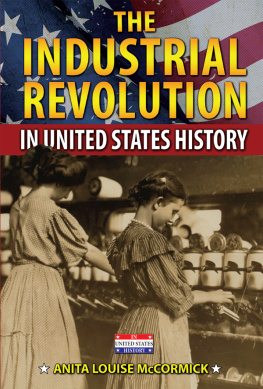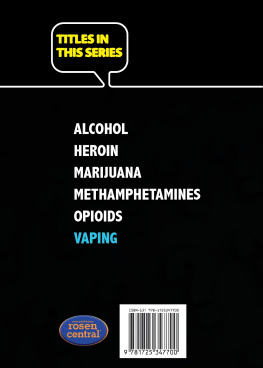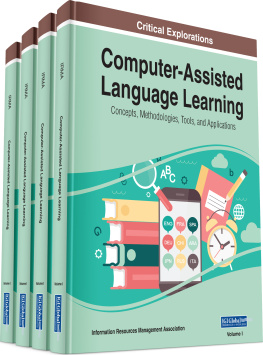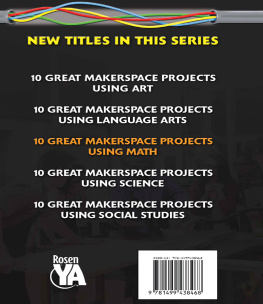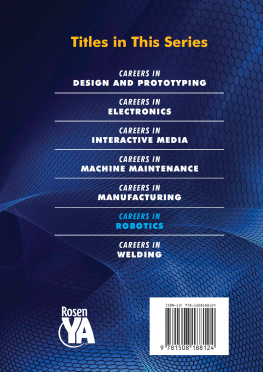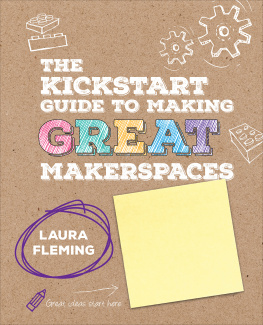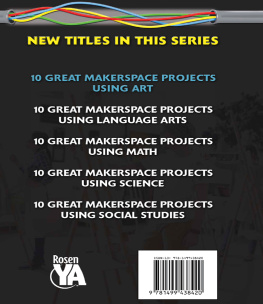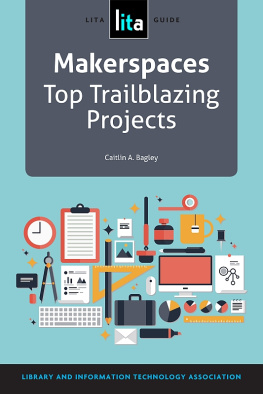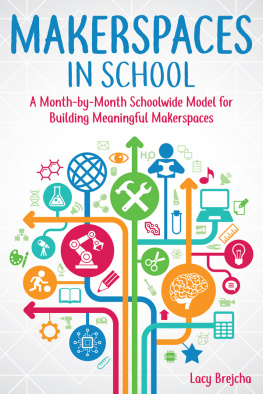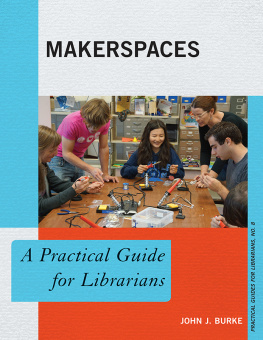Published in 2018 by The Rosen Publishing Group, Inc.
29 East 21st Street, New York, NY 10010
Copyright 2018 by The Rosen Publishing Group, Inc.
All rights reserved. No part of this book may be reproduced in any form without permission in writing from the publisher, except by a reviewer.
Names: McCormick, Anita Louise, author.
Title: 10 great makerspace projects using language arts / Anita Louise McCormick.
Description: New York: Rosen Publishing, 2018. | Series: Using makerspaces for school projects | Includes bibliographical references and index. | Audience: Grades 612.
Subjects: LCSH: MakerspacesJuvenile literature. | HandicraftJuvenile literature.
Maker Faires are conventions where makers of all kinds can get together and share ideas about projects that interest them.
T he world you are about to enter is a world of ideas made real. Not just the ideas and imagination of one person, but the imaginations of many. It is a world created by writers, artists, and designers. People who know how to make props, film videos, and create circuits and computer programs also live here. It is a world where robotic devices can be set to act out stories, too.
Welcome to the world of makerspaces!
Makerspaces are places where people can come together and tinker with ideas and projects that fascinate them. Becoming part of makerspace groups has advantages over working on your own. Most makerspaces have relaxed, cooperative environments. You can learn from each other and brainstorm. If something doesnt work and you need help, you can ask other members for advice. If something doesnt work, it only means to try a another approach.
Once makers have created something, they often want to connect with other people that enjoy the same challenges. Some do this in local meet-up groups. Others write blogs and create videos to share their discoveries. There are many popular podcasts and YouTube channels for people who are interested in making. Make: magazine and other websites offer opportunities for makers of all sorts to submit their projects for review and possible publication.
Maker Faires are events where makers come to see what other makers have been doing. They are sometimes billed as The Greatest Show (And Tell) On Earth. As the maker movement becomes more popular, such events are springing up all over the world. They allow makers of all sorts to get together, talk about what they have learned through the process of making, and display their work. Some Maker Faires are mostly for people working with computers, robotics, and highly technical experiments. Other Maker Faires are geared more toward crafters of fiber, wood, or other low-tech materials.
Maker Faires may attract participants that want to create new ways to tell and illustrate stories. One exhibit at the 2016 Maker Faire was entitled Fairy Tales, Science Fiction and Freud, Telling Stories. This project was a collaboration of artists Marianne Petit and Jody Culkin. In this exhibit of their work, Petit and Culkin found ways to combine art and technology with nineteenth-century science and science fiction to tell stories in an entirely new way. The books they chose to illustrate were Interpretation of Dreams by Sigmund Freud and stories from Der Struwwelpeter, an early childrens book written by German author Heinrich Hoffman.
Their exhibit included elaborately designed pop-up books that featured original art to illustrate these stories from the past. Other stories were illustrated with animated art, and displayed, along with a musical track, on LED computer screens. Still other stories had cut out drawings attached to solid bases. Through many different approaches to storytelling, Petit and Culkin helped to show how the world of makerspaces and literature could come together and enhance each other in entirely new ways.
CHAPTER ONE
MEET THE MAKERSPACE
I magine you had a place where you could experiment on any project that interests you. A place where everything from computers, tools, electronic parts, and robotic modules were available for your use. Cardboard, cloth, scissors, and a sewing machine, and all sorts of gadgets may also be available. Other students would be using the space as wellsome working on individual projects, others working in groups. If you needed help with a project, you could ask other students or teachers for help.
Sound like fun? That is exactly what is happening in makerspaces in schools, libraries, and community centers all over the world.
Many kinds of projects can happen in makerspaces. While some focus solely on computer science and technology such as 3D printers and robotics, others are more broad based. They include places for users to engage in other kinds of making, such as wood work, metal work, art, crafts, and sewing.
FROM STEM TO STEAM
Nearly everyone knows how makerspace activities can help make STEM (science, technology, engineering, and math) classes more interesting and bring real-world applications to theories taught in class. Students who are interested in science, engineering, math, and computers have been part of makerspaces since the beginning.
While sewing machines may not be as high tech as computers, 3D printers, and robots, they are still useful pieces of equipment in many makerspaces.
But now some schools are finding ways to bring makerspace ideas and technology to other classes, including the arts. When arts, including language arts, are added to STEM programs, they are known as STEAM programs. While STEAM is a newer concept to most educators than STEM programs, they are growing in popularity as school administrators learn how much they can add to the learning experience.
Even antique writing tools, such as a quill pen, ink, and paper, can be used for making projects in a STEAM language arts class.
MAKING MAKERSPACES WORK IN SCHOOLS
At one time, the only places students made things in school were in art class, shop, and sewing classes. Usually, all the equipment needed for the projects was kept in that classroom. But now that makerspaces, with their wide variety of making supplies, are becoming more popular, school administrators must decide where to locate makerspaces so that students have access to the workspace and equipment.


